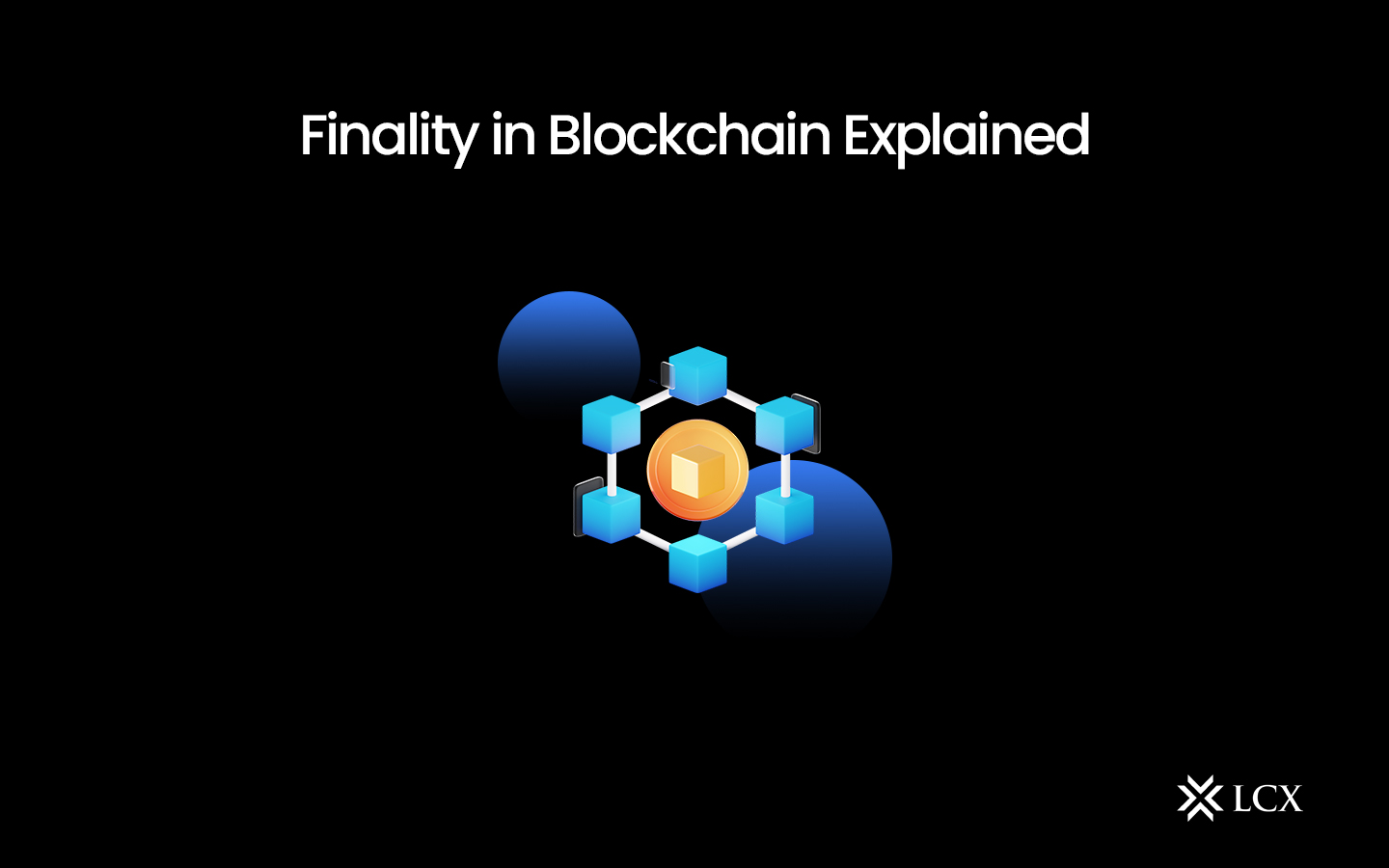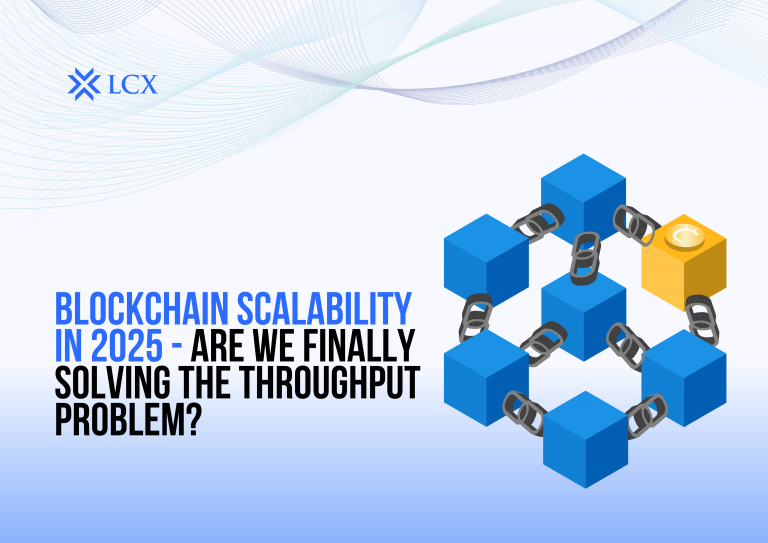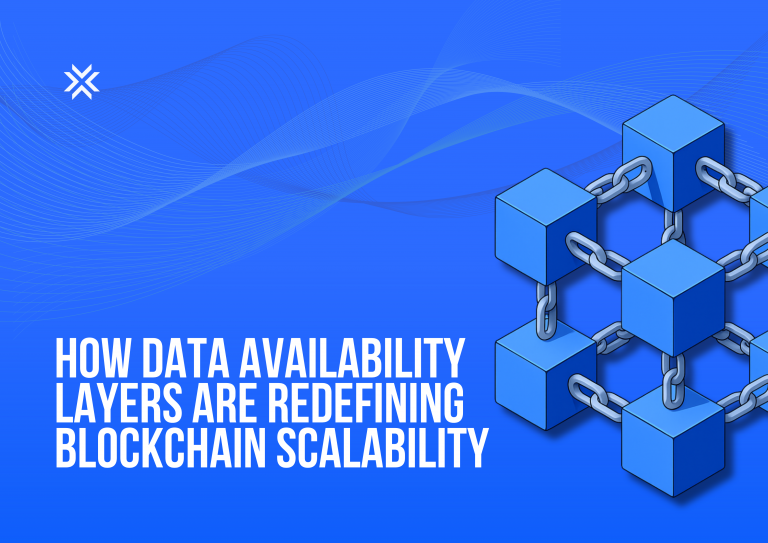Understanding Finality in Blockchain
In blockchain, finality refers to the irreversible certification of a transaction or group of transactions. In conventional financial systems, a confirmed transaction cannot be reversed. Similarly, achieving finality on a blockchain network ensures that a transaction is irreversible and cannot be altered after being added to the blockchain. This concept is essential for the security and authenticity of the blockchain.
Using consensus, the blockchain network reaches finality. Proof-of-work (PoW), proof-of-stake (PoS), and practicable Byzantine fault tolerance are a few examples of consensus algorithms used by diverse blockchain networks, each with a unique method for validating transactions and ensuring finality.
Types of Finality in Blockchain
In blockchain, finality can be probabilistic, economic, immediate, unconditional, or related to the entire state. On the blockchain, there are numerous varieties of finality, each describing a distinct degree of certainty and irreversibility regarding transactions and blocks. The primary forms of finality on the blockchain are as follows:
Probabilistic Finality
In the majority of blockchain systems, particularly those employing PoW consensus like Bitcoin, finality is probabilistic. When blocks are added on top of a confirmed transaction that has already been included in a block, the likelihood of reversing it decreases exponentially.
Economic Finality
The concept of economic finality is frequently associated with PoS systems. In terms of economic finality, a transaction is considered conclusive if reversing it would be financially impossible. In Proof-of-Stake, validators or nodes are required to stake a specific amount of cryptocurrency as collateral. If they approve fraudulent transactions, they run the risk of losing their stake, rendering malicious behavior economically irrational.
Instant Finality
Once a transaction is recorded on the ledger, the Ripple network ensures that it is instantaneously confirmed and irreversible. 150 validators verify each transaction. These validators may be added to Ripple’s Unique Node List, which currently consists of 35 validators.
Unconditional Finality
When a transaction is confirmed, it is deemed to be irrevocable. Under no circumstances is it possible to reverse the transaction. Obtaining unconditional finality can be challenging and frequently requires a high degree of centralization or a novel consensus method.
State Finality
In some blockchain systems, finality refers to the status of the blockchain as a whole, not just transactions. A state transition (a change in the blockchain’s state, such as the execution of a smart contract or the completion of a blockchain transaction) cannot be modified or undone. State finality is essential for applications such as smart contracts, where the veracity of the entire application state is crucial.
Why Finality Matters in Blockchain
Finality in blockchain provides the essential assurance of transaction validity and permanence, making it a fundamental concept for the reliability and functionality of the technology.
Finality provides a high level of security and trust in the system, ensuring that once a transaction has been confirmed, it cannot be modified or undone. By ensuring that the transaction is valid and recorded on the blockchain, finality prevents double spending, which occurs when the same digital asset is used multiple times.
For instance, double spending could occur if someone with one Bitcoin (BTC) attempted to send it in two distinct transactions to two different recipients. By ensuring finality, blockchain technology precludes such an occurrence. Once a transaction is confirmed and recorded on the blockchain, the digital asset is termed “spent” and cannot be used again.
In terms of smart contracts, finality is essential. The specifics of the agreement between the buyer and vendor are embedded directly into smart contracts, which are executable code. Finality ensures that the outcomes of these contracts are predetermined and unchangeable.
In addition, finality is how decentralized applications (DApps) ensure the safety and reliability of their operations. Finality ensures that decisions and transactions made within these applications cannot be modified or undone. In addition, by making transactions irreversible, the blockchain fosters trust among network members and consumers. The knowledge that transactions are irreversible increases users’ faith in the system.
Challenges to Achieving Finality in Blockchain
Forking, network latency, smart contract vulnerabilities, and 51% attacks impede the finalization of blockchain transactions. Forking occurs when the blockchain divides into multiple paths, generating multiple versions of the transaction history. This divergence puts the consensus method to the test, as it makes it difficult to determine which version is the official one and delays finalization.
For instance, community or developer disagreements over protocol updates can lead to hard forks. Different factions may continue to support PoW blockchains until the issue is resolved, resulting in a lack of finality.
The delay in data communication between nodes caused by network latency further complicates matters. By postponing the propagation of transaction data throughout the blockchain network, slow network connections can lead to errors in transaction order and validation.
In addition, the vulnerability of a smart contract could result in unanticipated behaviour, allowing malicious actors to exploit it and reverse transactions. Similarly, in a PoW blockchain, an entity with more than 50% of the network’s mining power may be able to alter the blockchain’s history and reverse transactions. This undermines closure and safety.
Due to these concerns, the blockchain’s integrity is at risk, necessitating the implementation of powerful consensus algorithms and efficient network protocols by developers in order to reduce forking and latency issues and ensure the expeditious and secure completion of transactions.
Techniques and Consensus Algorithms to Enhance Finality
Longer confirmation periods, numerous validations, and cutting-edge security algorithms, such as Algorand’s Pure PoS, delegated PoS (DPoS), and HoneyBadgerBFT, may assist in enhancing the blockchain’s finality.
One strategy entails longer confirmation times, permitting a greater number of validations before a transaction is deemed definitive. Lengthening the time required to reach consensus significantly increases the likelihood that a transaction’s validity will be confirmed and become irreversible.
Using the multiple confirmations technique, in which transactions are validated by a large number of nodes or validators, provides an additional layer of security, ensuring a broader consensus and reducing the likelihood of errors and malevolent attacks.
Moreover, inventive consensus algorithms such as Algorand’s Pure PoS, DPoS, and HoneyBadgerBFT have revolutionized the industry. Algorand combines a Proof-of-Stake protocol with a Byzantine agreement protocol to guarantee the swift and irreversible completion of transactions.
DPoS increases the network’s efficacy and finality by implementing a reputation-based system in which a small group of trusted delegates validate transactions. By achieving asynchronous Byzantine consensus, the HoneyBadgerBFT algorithm enhances finality and security even in the presence of malicious nodes or network delays.
Future Trends and Developments in Achieving Faster and More Reliable Finality
In essence, a multidisciplinary strategy incorporating diverse consensus techniques, cutting-edge encryption, and enhanced interoperability will be required in the future to achieve faster and more dependable closure.
The introduction of hybrid consensus models is one such development. By combining the benefits of different consensus algorithms, these hybrid consensus algorithms aim to improve scalability and performance while maintaining robust security. Projects have been experimenting with PoS methods because they utilize significantly less energy than PoW techniques and accelerate confirmation times.
In addition, there is a growing interest in inventive cryptographic techniques such as zero-knowledge (ZK) proofs and sharding. Zero-knowledge proofs enhance efficiency and privacy by enabling parties to validate transactions without disclosing sensitive data. Sharding, a technique for partitioning the blockchain into smaller, more manageable pieces, reduces the computational load on nodes and accelerates the transaction processing.
Existing encryption methods may become obsolete with the advent of quantum computing, necessitating the development of quantum-resistant algorithms. Blockchain networks are actively researching quantum-resistant cryptographic solutions in order to maintain the security and finality of transactions in the face of quantum threats.
The manner in which distinct blockchains interact with one another is a second area of interest. Using protocols such as Polkadot and Cosmos, inter-network transactions can be completed swiftly and seamlessly. This interoperability increases the overall efficacy of blockchain systems, resulting in a speedier and more reliable conclusion.










